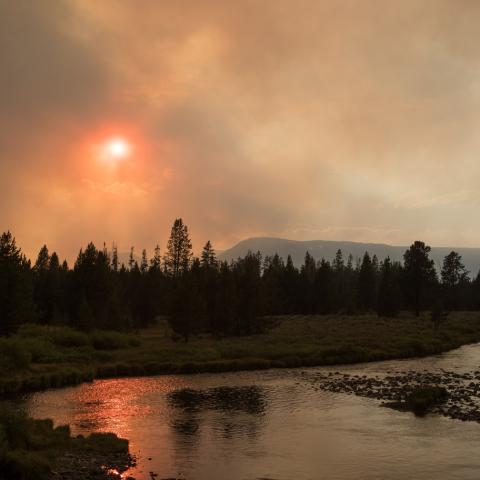
Grizzly bears are coming out of hibernation in Yellowstone National Park/NPS, Jim Peaco file
Grizzlies are on the move in Yellowstone National Park, where a large bear was spotted recently between Canyon Village and Fishing Bridge, according to park staff. In addition, grizzly tracks were reported between Mammoth Hot Springs and Norris Junction.
In case you're wondering, the first grizzly sighting of 2018 was on March 7. This year's first sighting, of the bear between Canyon and Fishing Bridge, was on March 8. The tracks between Mammoth Hot Springs and Norris Junction were seen this past Monday.
Male grizzlies come out of hibernation in mid-to-late March. Females with cubs emerge in April and early May. When bears emerge from hibernation, they look for food and often feed on elk and bison that died over the winter. Sometimes, bears will react aggressively while feeding on carcasses.
All of Yellowstone National Park is bear country: from the deepest backcountry to the boardwalks around Old Faithful. Protect yourself and the bears people come here to enjoy by following these guidelines:
- Prepare for a bear encounter.
- Carry bear spray, know how to use it, and make sure it’s accessible.
- Stay alert.
- Hike or ski in groups of three or more, stay on maintained trails, and make noise. Avoid hiking at dusk, dawn, or at night.
- Do not run if you encounter a bear.
- Stay 100 yards away from black and grizzly bears. Use binoculars, a telescope, or telephoto lens to get a closer look.
- Store food, garbage, barbecue grills, and other attractants in hard-sided vehicles or bear-proof food storage boxes.
- Report bear sightings and encounters to a park ranger immediately.
- Learn more about bear safety.
While firearms are allowed in the park, the discharge of a firearm by visitors is a violation of park regulations. Bear spray has proven effective in deterring bears defending cubs and food sources. It can also reduce the number of bears killed by people in self-defense.
The park restricts certain visitor activities in locations where there is a high density of elk and bison carcasses and lots of bears. Restrictions began in some bear management areas on Sunday, March 10.












Add comment